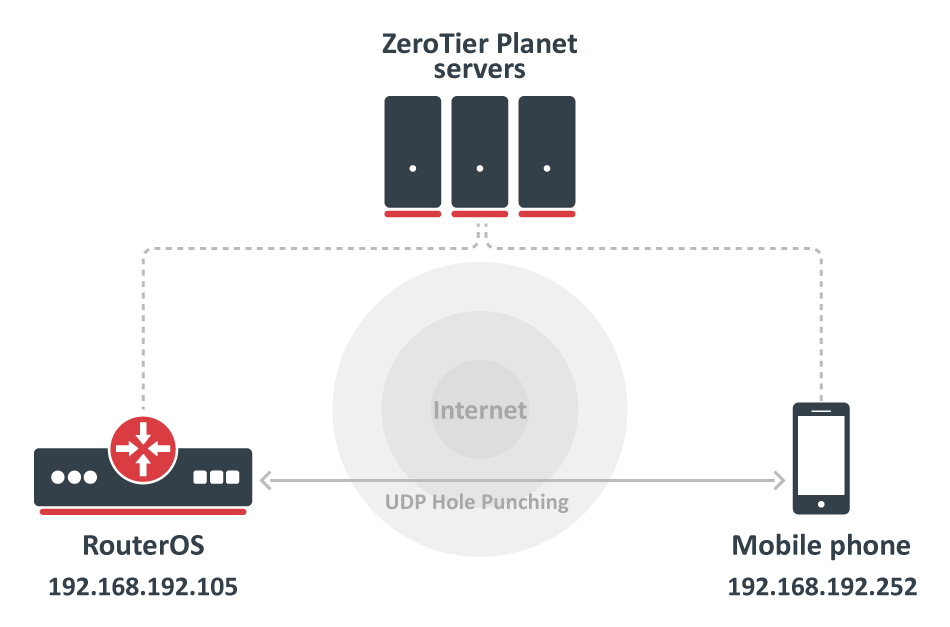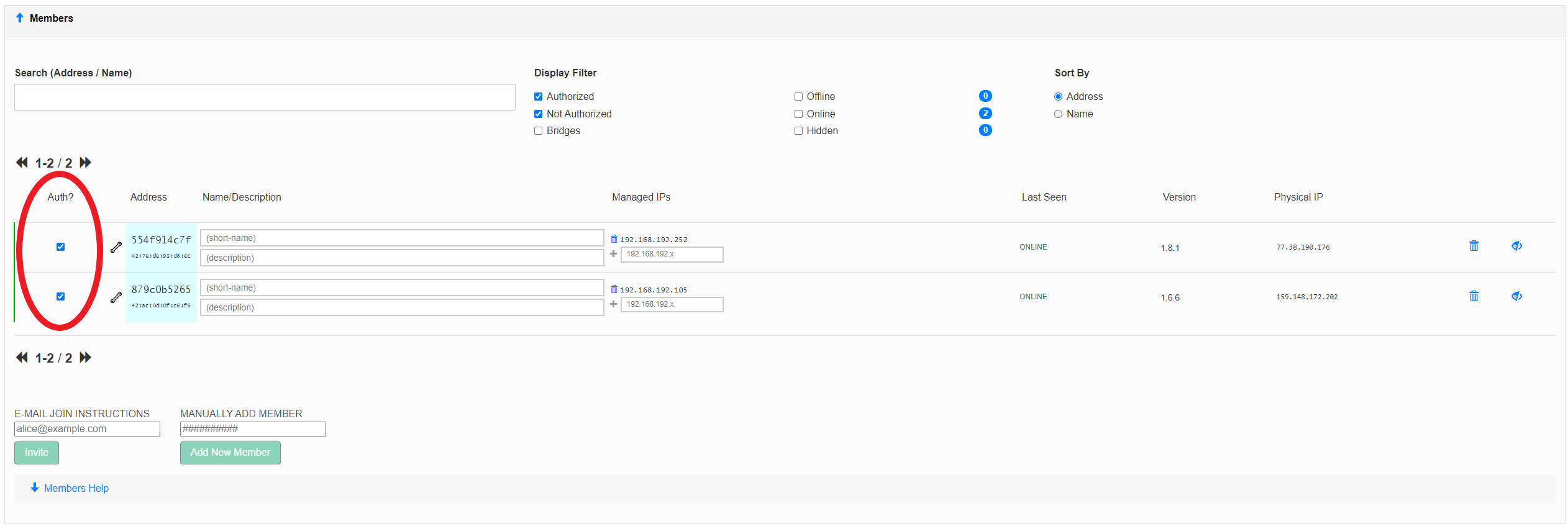The ZeroTier network hypervisor is a self-contained network virtualization engine that implements an Ethernet virtualization layer similar to VXLAN built atop a cryptographically secure global peer-to-peer network. It provides advanced network virtualization and management capabilities on par with an enterprise SDN switch, but across both local and wide area networks and connecting almost any kind of app or device.
MikroTik has added ZeroTier to RouterOS v7.1rc2 as a separate package for the ARM/ARM64 architecture.
It listens on three 3 UDP ports:
That means your peers could be listening on any port. To talk with them directly, you need to be able to send them to any port.
These ZeroTier recommended guidelines are consistent with the vast majority of typical deployments using commodity gateways and access points:

By default, ZeroTier is designed to be zero-configuration. A user can start a new ZeroTier node without having to write configuration files or provide the IP addresses of other nodes. It’s also designed to be fast. Any two devices in the world should be able to locate each other and communicate almost instantly so the following example will enable ZeroTier on RouterOS device and connect one mobile phone using the ZeroTier application.

Enable the default (official) ZeroTier instance:
[admin@mikrotik] > zerotier/enable zt1 |
Add a new network, specifying the network ID you created in the ZeroTier cloud console:
[admin@mikrotik] zerotier/interface/add network=1d71939404912b40 instance=zt1 |
Verify ZeroTier configuration:
[admin@MikroTik] > zerotier/interface/print Flags: R - RUNNING Columns: NAME, MAC-ADDRESS, NETWORK, NETWORK-NAME, STATUS # NAME MAC-ADDRESS NETWORK NETWORK-NAME STATUS 0 R zerotier1 42:AC:0D:0F:C6:F6 1d71939404912b40 modest_metcalfe OK |
Now you might need to allow connections from the ZeroTier interface to your router, and optionally, to your other LAN interfaces:
[admin@mikrotik] /ip firewall filter> add action=accept chain=forward in-interface=zerotier1 place-before=0 [admin@mikrotik] /ip firewall filter> add action=accept chain=input in-interface=zerotier1 place-before=0 |

[admin@MikroTik] > ip/address/print where interface~"zero" Flags: D - DYNAMIC Columns: ADDRESS, NETWORK, INTERFACE # ADDRESS NETWORK INTERFACE 3 D 192.168.192.105/24 192.168.192.0 zerotier1 [admin@MikroTik] > ping 192.168.192.252 count=3 SEQ HOST SIZE TTL TIME STATUS 0 192.168.192.252 56 64 407us 1 192.168.192.252 56 64 452us 2 192.168.192.252 56 64 451us sent=3 received=3 packet-loss=0% min-rtt=407us avg-rtt=436us max-rtt=452us |
You should specify routes to specific internal subnets in the ZeroTier cloud console, to make sure you can access those networks when connecting from other devices. |
zerotier/peer/ |
ZeroTier`s peer is an informative section with a list of nodes that your node knows about. Nodes can not talk to each other unless they are joined and authorized on the same network.
[admin@Home] > zerotier/peer/print Columns: INSTANCE, ZT-ADDRESS, LATENCY, ROLE, PATH # INSTANCE ZT-ADDRESS LATENCY ROLE PATH 0 zt1 61d294b9cb 186ms PLANET active,preferred,50.7.73.34/9993,recvd:4s526ms 1 zt1 62f865ae71 270ms PLANET active,preferred,50.7.252.138/9993,recvd:4s440ms,sent:9s766ms 2 zt1 778cde7190 132ms PLANET active,preferred,103.195.103.66/9993,recvd:4s579ms,sent:9s766ms 3 zt1 992fcf1db7 34ms PLANET active,preferred,195.181.173.159/9993,recvd:4s675ms,sent:4s712ms 4 zt1 159924d630 130ms LEAF active,preferred,34.121.192.xx/21002,recvd:3s990ms,sent:3s990ms |